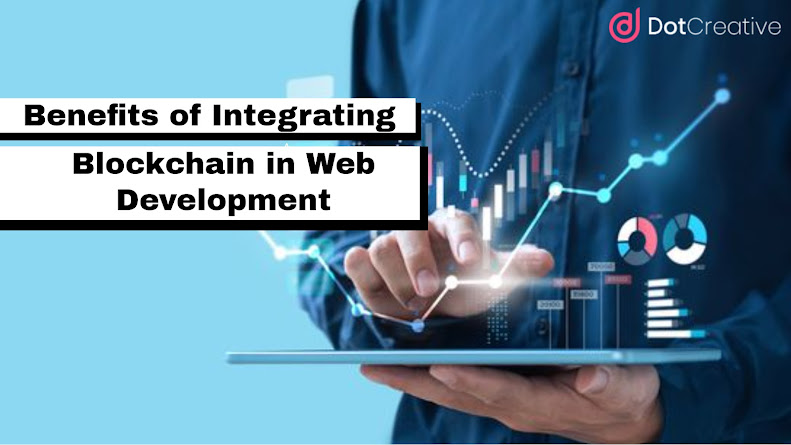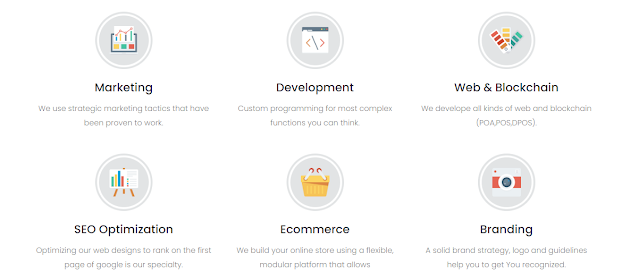Revolutionizing the Digital Solution: Web and Block chain Development Services
The fusion of web development and blockchain technology has emerged as a potent force, reshaping how we interact with the digital world. This blog explores the symbiotic relationship between web development and blockchain services, unraveling the possibilities and advantages they bring to the table.
Overview:
It involves a range of tasks, from designing user interfaces to coding server-side functionalities.
Key Aspects:
Front-End Development: Crafting user interfaces using HTML, CSS, and JavaScript.
Back-End Development: Implementing server-side logic and databases to ensure functionality.
Full-Stack Development: Involves both front-end and back-end development for end-to-end solutions.
Web Design: Focusing on the visual aesthetics and user experience of a website.
The Role of Blockchain in Web Development
Overview:
Blockchain technology, originally designed for secure and transparent transactions in cryptocurrency, has evolved to revolutionize various industries. When integrated with web development, it introduces a new paradigm of decentralized and trustless applications.
Key Aspects:
Decentralization: Eliminates the need for intermediaries, enhancing transparency and security.
Tokenization: Representing assets digitally through tokens on the blockchain.
Immutable Record-Keeping: Ensures data integrity and tamper-proof transaction history.
Benefits of Integrating Blockchain in Web Development
1. Enhanced Security
Cryptographic Security: Blockchain utilizes cryptographic techniques to secure transactions and data.
Decentralization: Eliminates a single point of failure, reducing the risk of cyberattacks.
2. Transparency and Trust
Immutable Record: Transactions on the blockchain are transparent and irreversible, fostering trust.
Smart Contracts: Automatically enforce predefined rules, eliminating the need for intermediaries.
3. Tokenization of Assets
Efficient Transactions: Tokenizing assets simplifies and speeds up transactions.
Fractional Ownership: Enables the division of assets into smaller, tradable tokens.
4. Improved Traceability
Traceable Transactions: Blockchain's decentralized ledger allows tracking of transactions.
Supply Chain Transparency: Ideal for industries where traceability is crucial, such as logistics.
5. Decentralized Applications (D Apps)
Peer-to-Peer Interaction: DApps operate on a decentralized network, promoting peer-to-peer interaction.
Censorship Resistance: DApps are resistant to censorship, enhancing freedom and inclusivity.
Web and Blockchain Development Services: A Synergistic Approach
1. Decentralized Web Applications
Smart Contracts Integration: Implementing smart contracts for decentralized logic and transactions.
Decentralized Storage: Utilizing blockchain-based storage solutions for enhanced security.
2. Tokenized E-Commerce Platforms
Digital Currency Integration: Accepting cryptocurrencies for online transactions.
Tokenized Rewards: Implementing loyalty programs using blockchain-based tokens.
3. Identity Management Solutions
Decentralized Identity: Developing systems where users control their identity on the blockchain.
Privacy Preservation: Ensuring secure and private identity verification.
4. Supply Chain Solutions
Traceability: Using blockchain for end-to-end traceability of products in the supply chain.
Smart Contracts for Agreements: Automating and enforcing agreements between stakeholders.
5. Financial and Banking Systems
Cross-Border Transactions: Streamlining and securing international transactions using blockchain.
Decentralized Finance (DeFi): Implementing decentralized financial services for inclusivity.
Challenges and Considerations
1. Scalability
Blockchain Scalability: Addressing challenges related to the scalability of blockchain networks.
Web Application Performance: Ensuring web applications remain responsive as user numbers grow.
2. User Experience
Wallet Integration: Simplifying the integration of wallets for users interacting with blockchain features.
Educating Users: Enhancing user understanding of blockchain features within web applications.
3. Regulatory Compliance
Navigating Regulations: Adhering to evolving regulatory frameworks in the blockchain and web development space.
Data Protection: Ensuring compliance with data protection laws, especially in decentralized identity solutions.
Future Trends and Innovations
1. Interoperability
Cross-Blockchain Compatibility: Developing solutions that can interact seamlessly across different blockchain networks.
Web3 Integration: Evolving towards a more interconnected and decentralized web.
2. Increased Tokenization
Tokenization of Real Assets: Extending tokenization beyond digital assets to real-world assets like real estate.
NFT Innovations: Exploring new use cases for non-fungible tokens (NFTs) in web applications.
3. Integration of AI and Blockchain
Smart Contracts with AI Logic: Combining artificial intelligence with smart contracts for more dynamic applications.
Enhanced Data Analytics: Leveraging blockchain for secure and transparent data analytics.
Conclusion
The amalgamation of web development and blockchain services opens up a realm of possibilities. From decentralized applications to tokenized ecosystems, the synergy between these two domains is reshaping the way we interact with the digital world. Although challenges exist, the potential benefits in terms of security, transparency, and innovation make the integration of web and blockchain development services an exciting frontier for businesses and developers. As we move forward, staying abreast of emerging trends and navigating complexities will be critical in harnessing the full potential of this transformative partnership.



Comments